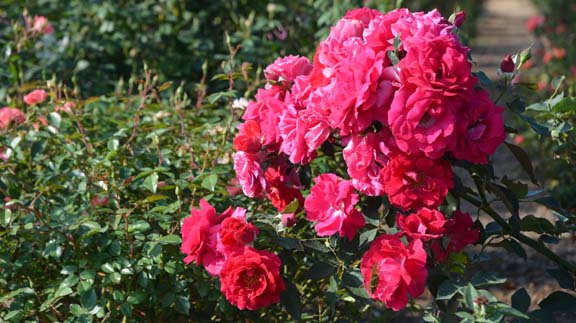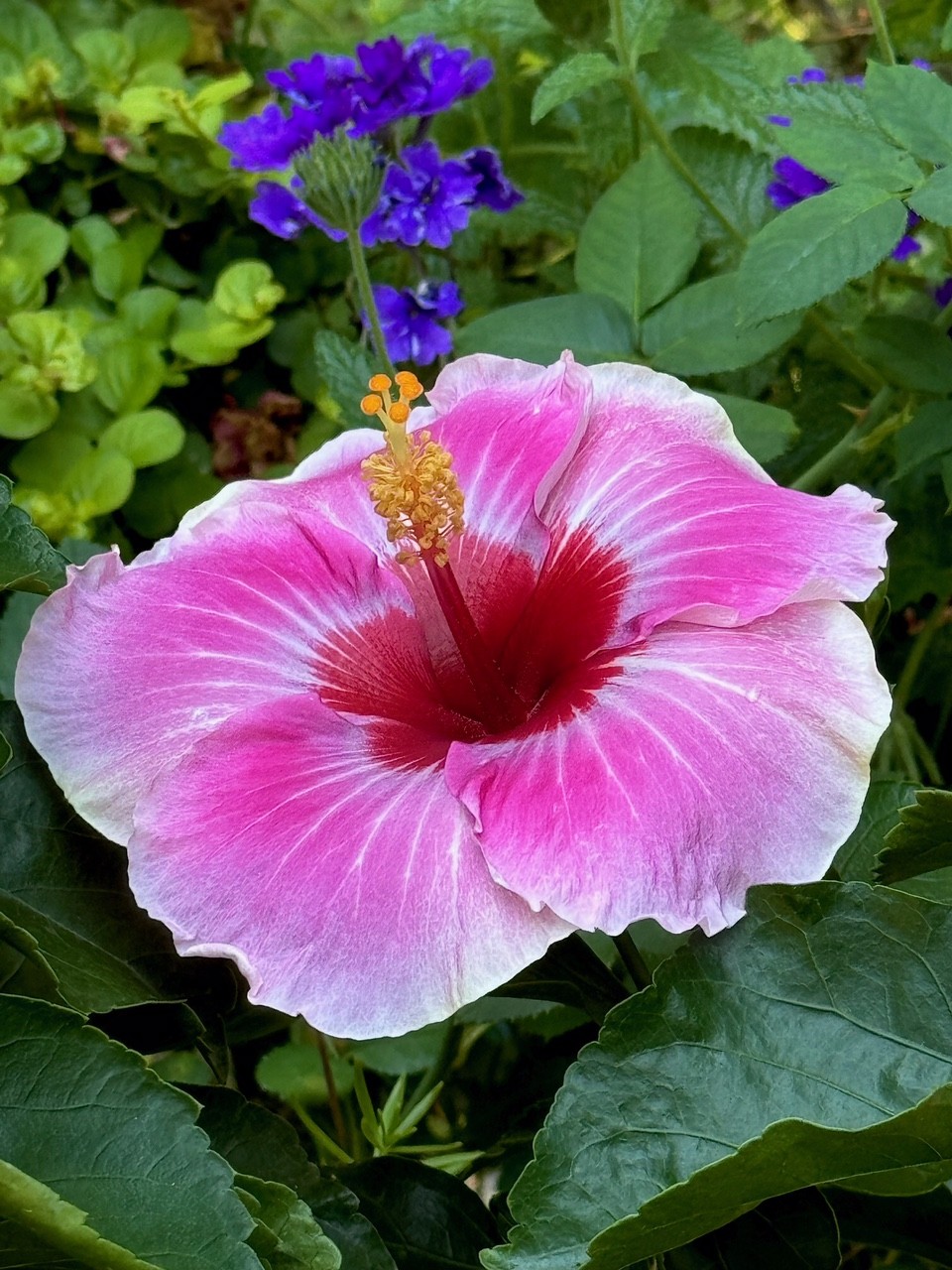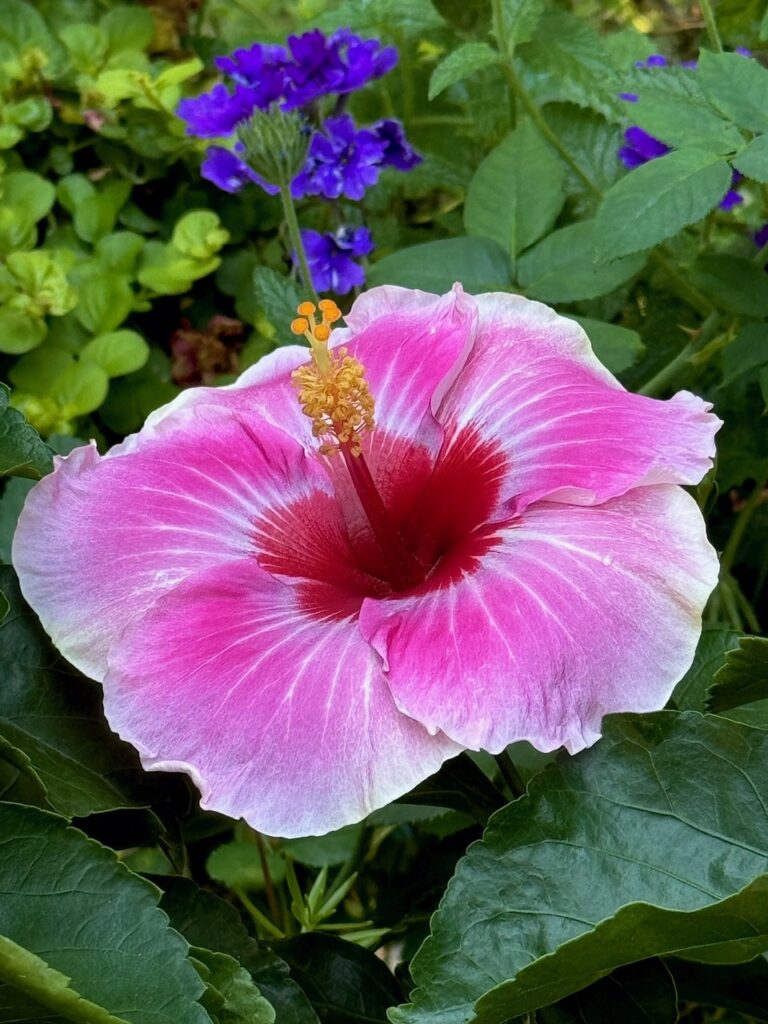Outdoor
Texas roses must be ‘on’ year round to make the cut

By: Kathleen Phillips
Writer: Kathleen Phillips, 979-845-2872, [email protected]
Contact: Dr. David Byrne, 979-862-3072, [email protected]
COLLEGE STATION — It’s late autumn, and most of the blossom-laden plants that colored summer are fading.
But seasonal changes offer no excuse for roses in experimental plots around Texas. They had better be loaded with colorful, fragrant autumn blooms and healthy green foliage if they ever expect to be planted in someone’s yard. That’s the contention of picky rose breeder Dr. David Byrne, Texas A&M AgriLife Research scientist based in College Station.
“The first thing I select for is a lot of flowers, because that’s what a gardener wants,” Byrne said as he paced one of his test plots. “Gardeners don’t just want one or two pretty flowers, they want hundreds. We look for a plant that’s at least 50 percent covered with flowers.”
Byrne and a team of graduate students made their third trip this year to the Ralph Moore Collection Rose Garden near Mansfield recently to see how the plants were blooming after similar visits last spring and during the extreme heat of August.
The collection was a gift of Moore, who opened a nursery in Visalia, California in 1937 and bred hundreds of roses to achieve unique colors, shapes, sizes and fragrances until he closed his Sequoia Nursery in 2008. Because he knew of Byrne’s research, Moore donated the collection to Texas A&M for further studies and use for variety development before he died in 2009 at the age of 102.
For Byrne, the collection offered the beauty that was needed for his hardy breeding lines, which tended to have less showy flowers.
Walking among the rows and scoring each plant on a variety of traits, Byrne explained how the California-derived specimens may blend with his stock to become varieties suitable for Texas.
“We started with over 1,000 plants here (near Mansfield), and over the years we’ve eliminated some because they were not well adapted,” said Byrne, who also is professor of horticultural sciences at Texas A&M University. “These plants were originally developed in California in the San Joaquin Valley where it’s hot in the day,but they have cool nights, which makes a big difference in a plant’s ability to grow well.”
The Moore collection, therefore, was bred primarily for beautiful, abundant blossoms, not resistance and tolerance to adversity, he said.
“Though a lot of the Moore roses really were not selected for heat tolerance, surprisingly quite a few are,” he said. “We’ve been very happy to identify maybe 15 percent of the collection that really produces nice flowers in the summertime. From these, we are making crosses with the more resistant roses that we have developed at Texas A&M.
“We come to the trial plot in the springtime when it’s cool and evaluate the flowering intensity, the flower quality and overall growth of the plant, then in August when it’s usually 95 to 100 degrees, and then do another evaluation in October to consider the same parameters. By comparing the summer versus the fall and spring, we can determine which ones are more resistant to disease and more tolerant of the heat,” Byrne said.
Specifically, Byrne is breeding for blackspot resistance, which tends to be more of a problem in humid parts of Texas than in California.
“We developed some of these (blackspot and heat tolerant strains) to a point where we can use them as breeding material and cross with the Moore material,” he said. “We are up to our second cycle on this type of crossing, and we are going to select ones that have good adaptation as well as nice flowers — and a lot of flowers — to develop into new varieties.
“What we’ve seen is that some really do well during the spring and look really gorgeous, but in the summer there are no flowers,” he said. “But in the fall, they recover fully. They’ve done that for four years consistently. So, we’re looking for things that have a flower intensity of what I’d call a five, which is 50 percent of the plant covered with flowers all year round. And then, of course, we want good flowers and lots of other characteristics as well.
“Going forward, we will try to combine those two lines of breeding material and have better flowers that are heat tolerant with blackspot resistance and will do well in the garden,” he said. “And considering that in developing a new rose plant, one cycle is five years, it will take several cycles to get there.”
-30-
HOME
Parting Shot

By: Jelly Cocanougher
Delicate microbes buried just beneath the surface. We walk by them, unbeknownst to us. Spores, spawn, and sclerotia, each with distinct characteristics. It is said that these fungi are all connected, speaking to one another as they populate the earth. The interconnectedness of all living things and the decaying world, such beauty lies within these otherworldly alien organisms.

HOME
Varietal Honey

By: Landon Moore
Landon Moore is the Wise County 4-H President and a member of the Wise County 4-H County Council. He is involved in beekeeping, as well as raising rabbits and poultry.
This essay was one that he wrote, and it was named the champion for both the Texas and National chapters of the Foundation For The Preservation of Honey Bees.
Varietal honey is honey that comes from a single source.
This honey has a flavor derived from the source flower and can even have a similar scent. In general, lighter colored honeys have a more subtle taste and dark honeys are more intense. Varietal honey has been compared to wine, in that honeys produced in different years can be distinguished, even if they come from the same flower and location.
This phenomenon is called terroir and is responsible for the individual taste of each honey harvest.
To read more, pick up a copy of the October edition of North Texas Farm & Ranch magazine, available digitally and in print. To subscribe by mail, call 940-872-5922.

HOME
The Garden Guy: America’s Sweetheart

By: Norman Winter | Horticulturist, Author, Speaker
Early in the summer, I was sent a press release that caused one of those holy wow moments. The headline said it all, “Proven Winners ColorChoice Expands Catalog with the Addition of Hollywood Hibiscus.”
I had already become familiar with the Hollywood Hibiscus series and was thrilled that the Proven Winners was adding this to their lineup.
This flower is nothing short of beautiful and exhibits prolific flower production. The flowers show three distinct colors, deep red in the very center, then the majority which is a rich rose pink with lighter pink to white along the margins.
To read more, pick up a copy of the October edition of North Texas Farm & Ranch magazine, available digitally and in print. To subscribe by mail, call 940-872-5922.

-

 Country Lifestyles2 years ago
Country Lifestyles2 years agoScott & Stacey Schumacher: A Growth Mindset
-

 Country Lifestyles8 years ago
Country Lifestyles8 years agoStyle Your Profile – What your style cowboy hat says about you and new trends in 2017
-

 HOME8 years ago
HOME8 years agoGrazing North Texas – Wilman Lovegrass
-

 Outdoor10 years ago
Outdoor10 years agoButtercup or Primrose?
-

 Country Lifestyles5 years ago
Country Lifestyles5 years agoAmber Crawford, Breakaway Roper
-

 Country Lifestyles9 years ago
Country Lifestyles9 years agoJune 2016 Profile – The man behind the mic: Bob Tallman
-

 Equine1 year ago
Equine1 year agoThe Will to Win
-

 Country Lifestyles8 years ago
Country Lifestyles8 years agoDecember 2016 Profile, Rusty Riddle – The Riddle Way




